|
|
Post by DubipR on Sept 4, 2014 9:12:12 GMT -5
They just keep on truckin' Harold Hedd #2 1973 and Harold Head in Hitler's Cocaine #1 and #2 1984 in color. Rand Holms is from the Wally Wood school of art and Wally would be proud.A doper version of Airboy. Harold was popular enough to come back 10 years later for a 2 issue mini. 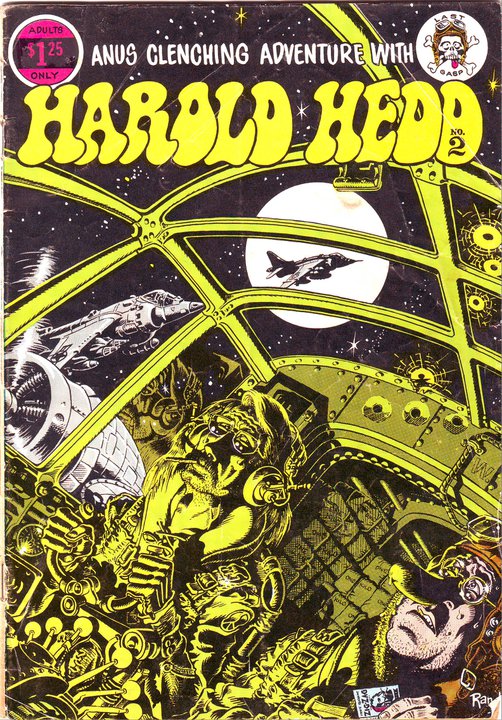 I have those Harold Hedd issues as well, but I'm still unable to locate a Number 1. Every show, convention, and shop I've been to that sells Undergrounds always has issue 2, but not the first. The Hitler's Cocaine comics are pretty fun too.
|
|
|
|
Post by Deleted on Sept 4, 2014 9:58:07 GMT -5
I used to own that first Harold Hedd. It was a collection of gag strips done for a local paper, IIRC, and a larger magazine size. More drug and sex gags, some local politics. Still good stuff.  |
|
|
|
Post by Ish Kabbible on Sept 4, 2014 10:10:33 GMT -5
I used to own that first Harold Hedd. It was a collection of gag strips done for a local paper, IIRC, and a larger magazine size. More drug and sex gags, some local politics. Still good stuff.  I'm sitting here with Harold Hedd #1 in my hand (that does not sound right). Its tabloid sized so it was in a different box. I must have a 2nd print since it got a $2.50 cover price. Definitely a daily strip collection, but much more detailed than the gag strips we re used to seeing these days. Got a 1973 copydate from Last Gasp |
|
|
|
Post by Ish Kabbible on Sept 4, 2014 10:36:43 GMT -5
Inner City Romance Comics #1 (1972) -#5 (1978) Guy Colwell and his multi racial modern sex romance tales  Insect Fear Insect Fear #1 1969 Justin Green,Art Spiegleman,Spain and more anthology. #3 (1972) has Spain,Deitch,S.C.Wilson,J Green,Jaxon,L Todd,R Brand and more. Beware if you're grossed out from bugs 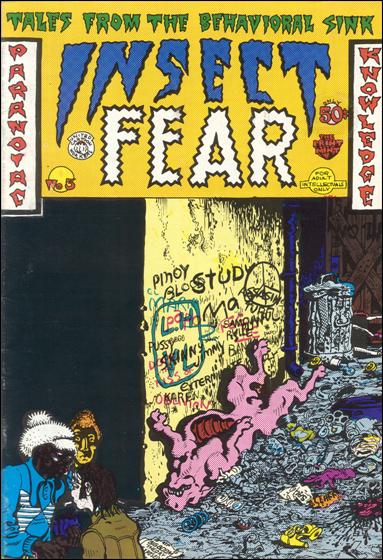 It Ain't Me Babe It Ain't Me Babe 1970. Women get their turn with contributions from Trina Robbins,Lisa Lyons and other women who only sign their work with their first names even though theres a picture of all the contributors. Classic cover 
|
|
|
|
Post by thwhtguardian on Sept 4, 2014 10:39:08 GMT -5
That is a pretty awesome cover, but who's the cow lady?
|
|
|
|
Post by Ish Kabbible on Sept 4, 2014 11:02:17 GMT -5
That is a pretty awesome cover, but who's the cow lady? Elsie The Cow from Borden's Milk |
|
|
|
Post by Deleted on Sept 4, 2014 14:47:15 GMT -5
Is that Harold Hedd cover in the cockpit an homage to an EC comic or something?
|
|
|
|
Post by MDG on Sept 4, 2014 15:57:22 GMT -5
What is or isn't an underground comic. It was pretty easy to determine thru the 70s as they were not sold on newstands but rather thru various head shops,records stores or other establishments that dealt with the counter-culture. When comic stores began to open by the 80s some began to order undergrounds as well. I'm more of the feeling that the real "underground" was defined more by audience and distribution than creators or content (though that was certainly a big part of it). When they first came out, just the idea of comics not for kids, at the ridiculous price of 50 cents, and that showed tits (can I say "tits" on this board) and drug use was totally unheard of. When comic shops started opening, that whole dynamic changed. I can give you my personel point of views and thats all it means. Last Gasp means underground. Kitchen Sink as well with exceptions (like Will Eisner stuff). Except the two Spirit undergrounds? Maybe one of the best single issues ever. |
|
|
|
Post by Deleted on Sept 4, 2014 16:51:05 GMT -5
I'm more of the feeling that the real "underground" was defined more by audience and distribution than creators or content (though that was certainly a big part of it). I feel the opposite is true. For example, today Zap Comix is a fancy hardbound slipcase set with a five hundred dollar pricetag published by Fantagraphics. It's the same exact stuff that used to be sold out of a baby carriage in the Haight in the 60's though. Is it still underground? Sure. As the years progressed the audience has expanded, and even the original audience has grown up. Some of those houses in Haight Ashbury are selling for seven and eight figures today. Some of those barefoot hippies who were looking for enlightenment in India through Eastern culture and LSD are today the wealthiest men in the world. Times change, but the undergrounds didn't. I kind of look at it like this, if a Troma movie won an Oscar, it would still be a Troma movie. And I'm willing to bet one day they'll all be in the Criterion Collection anyway. |
|
|
|
Post by Ish Kabbible on Sept 4, 2014 18:25:17 GMT -5
Underground comics reflect the society that exists at that particular time. By nature they would have to be rebellious, therefore left wing..far far left wing. In this day and age, with porn on home video disc and the internet, sex by itself wouldn't make a comic underground. Porn has been absorbed into our culture already, way too pervasive. I'm sure comics with the underground spirit are out there.In the 1990s or later I'm sure there were plenty of hip-hop comics never sold in comic shops but rather in places where that clientele gathered.Today it would be on the internet but since I'm not part of that culture I wouldn't know where to look. You're not going to find them in comic shops. Not the real ones. Jaxon's Illustrated Tales #1 1984 Jack Jackson and his historical stories. This issue dwells on the Spanish vs The Incas and an Apache treasure hoard.Can't seem to find a cover image.The same guy who did that great Comanche Moon graphic novel Juicy Tales #1 1986 a hardcore collection from Brad Foster. Sorry can't show the cover of a busty girl and her sword The Kingdom of Heaven Is Within You #1 1969 John Thompson . Alan Moore ingesting 20 tabs of LSD couldn't get any weirder than this comic. Lots of one eyed people and the dialogue turns to Hebrew all of a sudden 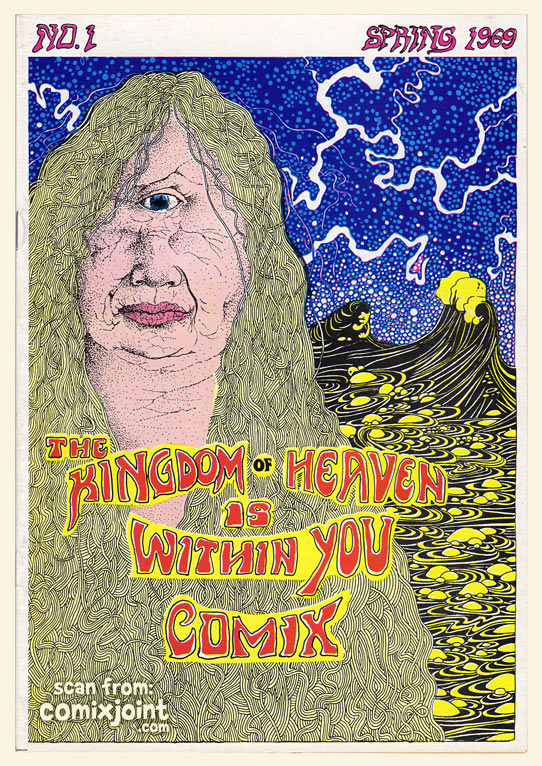 Left Field Funnies Left Field Funnies #1 1972 Bobby "Dirty Duck" London is featured along with his strip Merton. Gary Hallgren gives a hand along with Fleniken's Trots and Bonnie and Ted Richard's Dopin'Dan 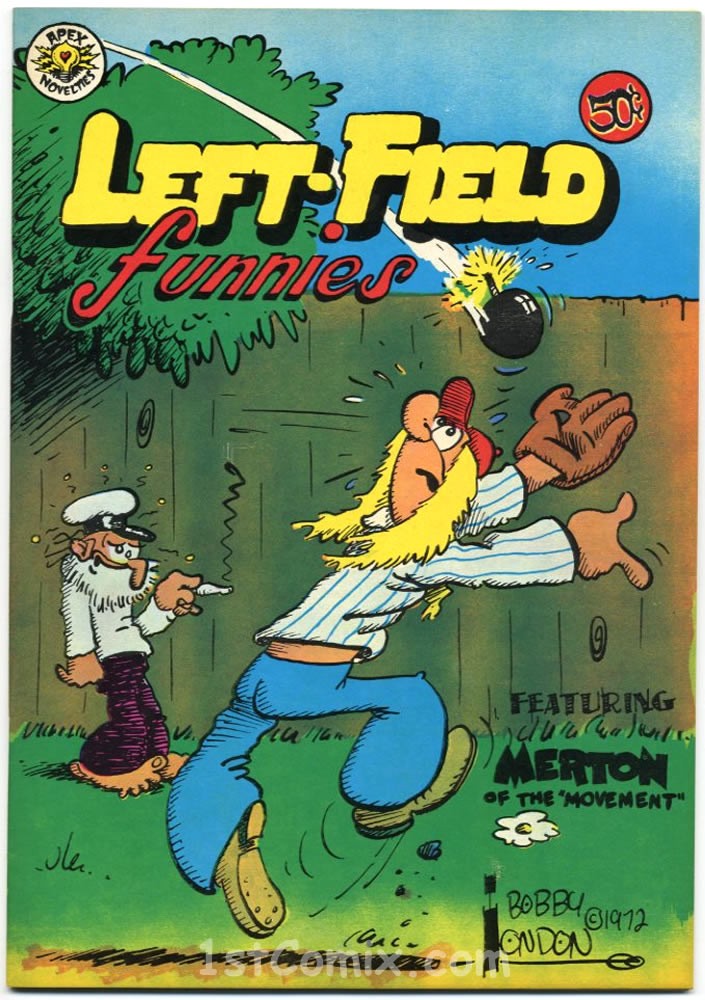 |
|
|
|
Post by Rob Allen on Sept 4, 2014 19:42:39 GMT -5
As promised, here are the B's in my comix box: Balloon Vendor - Fred Schrier with a 4-page story by Dave Sheridan  Barbarian Comics Barbarian Comics - I have #2 & 3 of this 4-issue series. Covers below by Han Hale (#2) and John Williams (#3); interior stories by Hale, Williams, Will Meugniot, Ron Harris, Tom Bird, Michael Whelan, and David Coulsin, and a couple of illustrations by Corben.   Barbarian Killer Funnies Barbarian Killer Funnies - Tom Bird's Crnch the Barbarian. The cover is a wraparound but I can't find a single image, so here are the front and back: +pagecover.jpg) 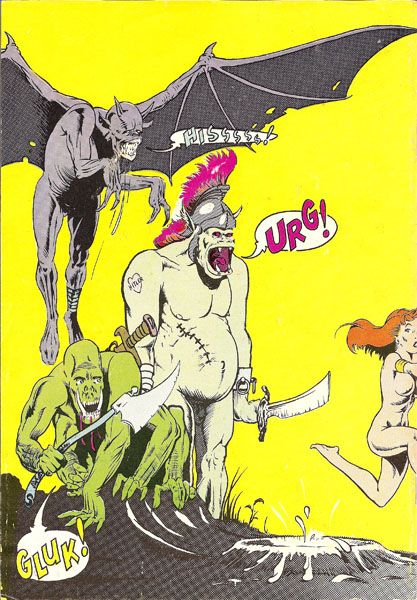 Big Apple Big Apple has already been mentioned, but it's worth mentioning again. Larry Hama, Paul Kirchner, Stu Schwartzberg, Wally Wood, Archie Goodwin (drawing!), Al Williamson. Linda Fite, Neal Adams, Ralph Reese, Al Weiss, Herb Trimpe, and the editor, Flo Steinberg. Bijou Funnies #8 - this is my only issue of this series, but what an issue - a Harvey Kurtzman cover! (his signature is part of the graffiti on the lower right) And all the stories are underground artists doing parodies of other undergrounds! - Jay Lynch does the Freak Brothers - Bill Stout does Snappy Sammy Smoot - Skip Williamson does Mr. Natural - Denis Kitchen does Hungry Chuck Biscuits - Pat Daley does Cheech Wizard - Robert Crumb does Nard 'n' Pat - Bill Griffith does Kim Deitch - Kim Deitch does Mr. Toad & Zippy - Justin Green does Checkered Demon - Willy Murphy does Ace Hole, Midget Detective - Jay Kinney does Trashman meeting a Trina Robbins character - and Ralph Reese does a parody of the 50s MAD ad that named all of the imitator magazines!  Binky Brown Meets the Holy Virgin Mary Binky Brown Meets the Holy Virgin Mary - Yes, I have it - Justin Green's autobiographical tour-de-force that chronicles the development of his OCD, with obsessive thoughts focused on religion and sex. This was one of the first autobiographical comics; art spiegelman is quoted as saying, "Without Binky Brown there would be no Maus." At the time, Green blamed the Catholic church for causing his neurosis, but after learning about OCD he changed that stance, although he did not return to Catholicism.  Bizarre Sex Bizarre Sex - I have #1, and we can't post those covers here. Cover of #1 is by Denis Kitchen; I didn't know he was an artist. Inside, the contents changed with the 7th printing in 1984; they ditched the original contents of #1 and replaced them with the contents of #2. I have an earlier printing, which isn't indexed at the GCD, and my copy is inaccessible right now, so I can't tell you what's inside. |
|
|
|
Post by Rob Allen on Sept 4, 2014 19:49:16 GMT -5
|
|
|
|
Post by Deleted on Sept 4, 2014 20:10:05 GMT -5
Any barbarian themed underground is a must have.
|
|
|
|
Post by benday-dot on Sept 4, 2014 20:35:47 GMT -5
I'm more of the feeling that the real "underground" was defined more by audience and distribution than creators or content (though that was certainly a big part of it). I feel the opposite is true. For example, today Zap Comix is a fancy hardbound slipcase set with a five hundred dollar pricetag published by Fantagraphics. It's the same exact stuff that used to be sold out of a baby carriage in the Haight in the 60's though. Is it still underground? Sure. As the years progressed the audience has expanded, and even the original audience has grown up. Some of those houses in Haight Ashbury are selling for seven and eight figures today. Some of those barefoot hippies who were looking for enlightenment in India through Eastern culture and LSD are today the wealthiest men in the world. Times change, but the undergrounds didn't. I kind of look at it like this, if a Troma movie won an Oscar, it would still be a Troma movie. And I'm willing to bet one day they'll all be in the Criterion Collection anyway. I feel a little more as MDG does concerning the undergrounds. That is the distribution and format and presentation have much to do with constitutes the authentic underground. It was a movement as much as an article of consumption. There really is that intangible quality to the endowment. For instance, considering that half a grand prestige ZAP collections from FB you cite, while it indisputably carries underground content I hardly consider it any way shape or form an underground book, if anything it is in harsh violation of the scene's original DIY ethos. And it really was a scene. I have a copy of that softbound Corben collection from Warren that came out in the 80's, "The Odd World of Richard Corben". It contains a lot of the early seminal Corben work from Fantagor and Last Gasp, but I still don't consider it to be an underground comic in my collection. It is certainly a sweet compilation trade, but a Jim Warren package job does not much allow for the "spirit" of the underground to shine through. |
|
|
|
Post by Deleted on Sept 4, 2014 22:37:01 GMT -5
I can see the point, I just feel differently is all. As time goes on so does the delivery method of content. I watch old hippy music festivals on DVD. I wouldn't say it's the same as having been to the festival, but to the people who were there it's basically a photograph of the moment. That's what the Zap hardcover is. A photograph of the scene you speak of. Just like all comics, the original first print is the "real" one. Nobody says "Yeah, I have an Amazing Fantasy #15" when they really mean they have a TPB featuring early Spiderman material. But in the original first edition floppy format or any number of reprints, when you crack it open you're reading Silver Age superhero comics. I feel the same about undergrounds. When they're rereleased in an identical format (possibly with a price change on the cover) or in a new format, they're still underground comix. The topic gets more complex after the direct market comes to play. Are 80's independent comics undergrounds? I feel sometimes they can be, but often they are not. How about today, is Johnny Ryan making "underground" comics? That's not what I call them, but I can see an argument either way. Same with the progression of society. Gay Comix was an underground from an era where anti-sodomy laws not only existed in many states, but were actually enforced. Today a comic of the same subject matter may not be mainstream exactly, but a retailer isn't going to go to prison for selling it. There's actually a lot of grey area where I think a lot of people will find a different point in the sand to draw their line. But I think we can all agree these 60's and 70's examples are definitely underground comix  |
|